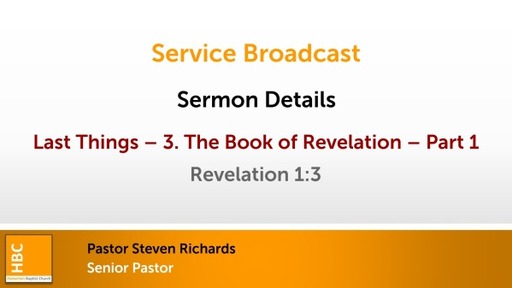Last Things 3 - The Book of Revelation - Part 1

1 - The Immediate Context and Purpose
a. God Sees Their Tears
b. Influential Prayer
c. Final Victory
d. Jesus Coming Again
2 - The Use of Symbols and Numbers
3 - Schools of Interpretation
a. Preterist
b. Futurist
c. Historist or Historical View
The historicist view does neither, but teaches that the book of Revelation is a prophecy of the history of the kingdom of God from the first to the second advent
i. Church Historical View
They said that the main purpose of the book of Revelation is to give us some account of the chief phases in the history of the Church. A better way, perhaps, of putting it is to say that the book of Revelation is not detailed history but a kind of précis of the phases of church history between the first coming of our Lord and His second coming.
ii. Continuous Historical View
A second, and more popular, sub–division of historicist teaching is the continuous historical view, which teaches that the book of Revelation is a book of history without a break. It is a prophecy of the detailed history of the Christian Church and there is no overlapping between its various visions. The visions which are given here deal with the history of the Church in chronological order, each one following the previous one
iii. Spiritual Historicist View
But the third view teaches that Revelation is a book which puts forward principles. Because the book prepares us in principle for whatever may actually be happening, we are able to understand it and to be encouraged and comforted.